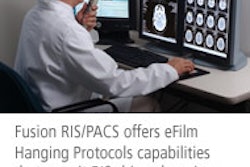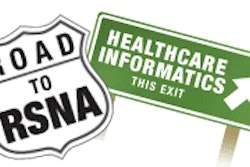VIENNA - Using speech recognition (SR) software within a radiology department's RIS or PACS successfully reduces report turnaround time, according to a pair of studies presented at the European Congress of Radiology on Friday.
"We found speech recognition software easy to use, but the interface with the RIS is very important," said Tomi Kauppinen, a doctoral candidate from the department of computer science at the University of Helsinki in Finland.
Kauppinen presented research conducted at the Helsinki Medical Imaging Center (HMIC) on the use of a Finnish radiological speech recognition system (Philips Speech Processing, Vienna) compared with conventional taped dictation and transcription.
The HMIC processes the images for 10 hospitals in the Helsinki area, and produces more than 500,000 examinations on an annual basis, according to Kauppinen. The research team performed a retrospective analysis of exam report times over the course of one week from two HMIC hospitals, a surgical hospital, and a pediatric hospital.
The facilities perform a mix of radiological studies such as ultrasound, CT, x-ray, and fluoroscopy. The group examined the time between the imaging exam and the final report in conventional dictation and transcription for 616 cases at the pediatric facility and 586 exams at the surgical hospital. Radiology reports from the emergency room at either institution were excluded from the analysis, Kauppinen noted.
The team found that a dictated and transcribed report from the pediatric hospital averaged 22.58 hours for completion, while the surgical hospital was able to generate a final report in little more than 21 hours (21.13), according to Kauppinen. The group then analyzed the time to completion with SR software for 224 reports from both facilities that covered the same mix of modalities as the conventionally generated reports.
Kauppinen explained that there were fewer reports to analyze from the SR group due to the smaller number of physicians who had been trained on the software at the time of the study. They found that the average time for a final report to be issued with the SR application was 10.02 hours, a decrease of more than 50%.
In addition to the change in workflow, removing the transcriptionists from the report process, and decreasing final report turnaround time, Kauppinen said the radiologists believed the quality of the reports was enhanced by use of the SR software.
In the second study, Dr. Christoph Trumm from the department of clinical radiology at the University of Munich Hospital in Germany presented the results of research comparing SR software (Philips Speech Processing) with conventional dictation in the report turnaround time for CR and CT exam availability in his institution's hospital information system (HIS)/RIS (Siemens Medical Solutions, Erlangen, Germany).
The group retrospectively examined the conventional dictation report turnaround time for CT and CR studies, 37,898 datasets, from 12 radiologists in November 2002 through February 2003. They compared this time average with SR report turnaround time for the same radiologists on the same modalities, 39,680 datasets, in November 2003 through February 2004.
According to Trumm, the number of conventional dictation reports delivered in less than one day was 3,485 compared with 11,453 for SR. The group found that 2,410 conventional dictation reports were delivered in less than five hours, compared with 9,710 SR reports for the same time period. In addition, only 352 conventional dictation and transcription reports were able to be finalized in less than an hour, compared with 2,050 SR reports, Trumm noted.
"This corresponds to an increase of reports delivered (by SR) in less than one day by a factor of 3.1, in five hours or less by 3.9, and in less than one hour by 5.6," he said.
The team found that radiologist self-correction of the SR application resulted in faster turnaround times than use of the SR application with a transcriptionist who performed corrections and returned the report to the physician for final review and signing. Trumm also noted that the researchers found the greatest report time savings with the use of SR in cross-sectional imaging.
"The implementation of speech recognition within an existing RIS/PACS environment facilitates a significant improvement of report availability when online speech recognition and radiologist self-correction are used," Trumm said.
By Jonathan S. BatchelorAuntMinnie.com staff writer
March 4, 2005
Related Reading
E-mail reminders sharply cut report-signing delays, December 1, 2004
Optimizing alternative reporting strategies, July 16, 2004
Speech recognition hits the mark, thanks to editors, June 8, 2004
SR evangelist touts technology's benefits, drawbacks, May 21, 2004
Imaging reports also benefit from improved signal-to-noise ratio, May 3, 2004
Copyright © 2005 AuntMinnie.com



















